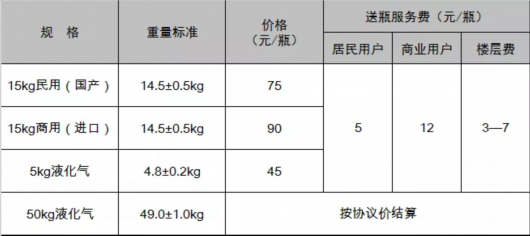* @data: data ptr for @threadfn.
* @namefmt: printf-style name for the thread.
*
* Description: Convenient wrApper for kthread_create() followed by
* wake_up_process(). Returns the kthread or ERR_PTR(-ENOMEM).
*/
#define kthread_run(threadfn, data, namefmt, ...)
({
struct task_struct *__k
= kthread_create(threadfn, data, namefmt, ## __VA_ARGS__);
if (!IS_ERR(__k))
wake_up_process(__k);
__k;
})
дҪҝз”Ёkthread_runпјҢдёҺkthread_createдёҚеҗҢзҡ„жҳҜпјҢе…¶еҲӣе»әж–°зәҝзЁӢеҗҺз«ӢеҚіе”ӨйҶ’е®ғпјҢе…¶жң¬иҙЁе°ұжҳҜе…Ҳз”Ёkthread_createеҲӣе»әдёҖдёӘеҶ…ж ёзәҝзЁӢпјҢ然еҗҺйҖҡиҝҮwake_up_processе”ӨйҶ’е®ғ
еҶ…ж ёзәҝзЁӢзҡ„йҖҖеҮә
зәҝзЁӢдёҖж—ҰеҗҜеҠЁиө·жқҘеҗҺпјҢдјҡдёҖзӣҙиҝҗиЎҢпјҢйҷӨйқһиҜҘзәҝзЁӢдё»еҠЁи°ғз”Ёdo_exitеҮҪж•°пјҢжҲ–иҖ…е…¶д»–зҡ„иҝӣзЁӢи°ғз”Ёkthread_stopеҮҪж•°пјҢз»“жқҹзәҝзЁӢзҡ„иҝҗиЎҢ гҖӮ
int kthread_stop(struct task_struct *thread);kthread_stop() йҖҡиҝҮеҸ‘йҖҒдҝЎеҸ·з»ҷзәҝзЁӢ гҖӮ
еҰӮжһңзәҝзЁӢеҮҪж•°жӯЈеңЁеӨ„зҗҶдёҖдёӘйқһеёёйҮҚиҰҒзҡ„д»»еҠЎпјҢе®ғдёҚдјҡиў«дёӯж–ӯзҡ„ гҖӮеҪ“然еҰӮжһңзәҝзЁӢеҮҪж•°ж°ёиҝңдёҚиҝ”еӣһ并且дёҚжЈҖжҹҘдҝЎеҸ·пјҢе®ғе°Ҷж°ёиҝңйғҪдёҚдјҡеҒңжӯў гҖӮ
еңЁжү§иЎҢkthread_stopзҡ„ж—¶еҖҷпјҢзӣ®ж ҮзәҝзЁӢеҝ…йЎ»жІЎжңүйҖҖеҮәпјҢеҗҰеҲҷдјҡOops гҖӮеҺҹеӣ еҫҲе®№жҳ“зҗҶи§ЈпјҢеҪ“зӣ®ж ҮзәҝзЁӢйҖҖеҮәзҡ„ж—¶еҖҷпјҢе…¶еҜ№еә”зҡ„taskз»“жһ„д№ҹеҸҳеҫ—ж— ж•ҲпјҢkthread_stopеј•з”ЁиҜҘж— ж•Ҳtaskз»“жһ„е°ұдјҡеҮәй”ҷ гҖӮ
дёәдәҶйҒҝе…Қиҝҷз§Қжғ…еҶөпјҢйңҖиҰҒзЎ®дҝқзәҝзЁӢжІЎжңүйҖҖеҮәпјҢе…¶ж–№жі•еҰӮд»Јз ҒдёӯжүҖзӨәпјҡ
thread_func()иҝҷз§ҚйҖҖеҮәжңәеҲ¶еҫҲжё©е’ҢпјҢдёҖеҲҮе°ҪеңЁthread_func()зҡ„жҺҢжҺ§д№ӢдёӯпјҢзәҝзЁӢеңЁйҖҖеҮәж—¶еҸҜд»Ҙд»Һе®№ең°йҮҠж”ҫиө„жәҗпјҢиҖҢдёҚжҳҜиҺ«еҗҚе…¶еҰҷең°иў«дәә“жҡ—жқҖ” гҖӮ
{
// do your work here
// wait to exit
while(!thread_could_stop())
{
wait();
}
}
exit_code()
{
kthread_stop(_task); //еҸ‘дҝЎеҸ·з»ҷtaskпјҢйҖҡзҹҘе…¶еҸҜд»ҘйҖҖеҮәдәҶ
}
гҖҗLinuxеҶ…ж ёзәҝзЁӢkernel threadиҜҰи§ЈгҖ‘
жҺЁиҚҗйҳ…иҜ»
- LinuxеҮ з§Қеёёи§ҒеҸҚеј№shellпјҢжғіжҲҗеӨ§зүӣзҡ„дҪ еҝ…йЎ»дәҶи§Ј
- дёәд»Җд№ҲеҚ•зәҝзЁӢзҡ„RedisиғҪеӨҹиҫҫеҲ°зҷҫдёҮзә§зҡ„QPSпјҹ
- дёҖзҜҮж–Үз« и®©дҪ дәҶи§ЈLinuxиҝӣзЁӢи°ғеәҰеҷЁ
- еҝ«йҖҹдҝ®ж”№LinuxжңҚеҠЎеҷЁиҝңзЁӢз«ҜеҸЈж–№жі•
- UbuntuжӣҙжҚўй»ҳи®Өз»Ҳз«Ҝ
- дҪ йңҖиҰҒзҹҘйҒ“зҡ„LinuxеҗҺеҸ°жңҚеҠЎеҷЁејҖеҸ‘зҹҘиҜҶзӮ№
- Linuxдёӯж–Ү件зҡ„еҺӢзј©е’Ңи§ЈеҺӢзј©
- LinuxеңЁеҗҢдёҖдёӘжңҚеҠЎеҷЁдёҠиҝҗиЎҢApacheгҖҒNginxе’ҢHAProxy
- Linux е®үиЈ…mysql5.7.29жәҗз Ғе®үиЈ…
- дёӨдёӘжҠҖе·§её®дҪ и®°дҪҸеӨҚжқӮ Linux е‘Ҫд»ӨпјҒ

















